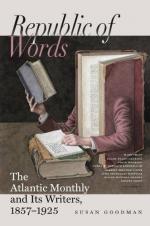The Letter of Palacio is now for the first time published in the original, although it was largely used by Herrera in his “Historia General.” “To me,” says Mr. Squier, “the relation has a special interest. I have been over a great part of the ground that was traversed by its author, and I am deeply impressed with the accuracy of his descriptions.... His memoir will always stand as one of the best illustrations of an interesting country, as it was at the period immediately succeeding the Conquest.” It appears, that, under an order from the Crown, Palacio was deputed to visit a number of the Provinces of Guatemala, and to report upon them, especially in respect to the condition of their native inhabitants. The memoir now published relates chiefly to the territory comprised in the present Republic of San Salvador. It shows Palacio to have been an intelligent observer, and a kindly, well-disposed man,—not free from the superstitions of his time and race, but less credulous than many of his contemporaries. His report is full of matter of value to the historical inquirer, and of entertainment for the general reader. His stories of the manners of the people, and his accounts of the animals of the district are brief, but characteristic. But the most interesting part of his narrative is that which relates to the wonderful ruins of Copan. It is a remarkable fact, stated by Mr. Squier in his Prefatory Note, that these ruins do not appear to have been noticed by any of the chroniclers of the country down to the time of Fuentes, who wrote in 1689, more than one hundred years after Palacio. It was not, indeed, until 1841, when Stephens published his account of them, that an accurate description was given to the world of these most interesting and most puzzling remains of a forgotten people and an unknown antiquity. Even in Palacio’s time, only vague traditions existed regarding them. His account has a permanent value from being the earliest known, and as proving that within fifty years after the Spanish Conquest they presented very nearly the same appearance as at present.
Mr. Squier has enriched Talacio’s Letter with numerous and important notes. He claims a lenient judgment of his translation, which is printed side by side with the original, on account of the obscurities of the manuscript, and the uncertainty as to the meaning of some of the writer’s expressions. But, allowing for these difficulties, we regret that Mr. Squier did not bestow a little more pains on this part of his work. He has fallen into some slight errors, which might easily have been corrected, and he has, as we think, lost something of the spirit of the original by too free a version. The book is one which in typographic beauty would meet the demands of the most exacting bibliographer. We regret the more that the pages are disfigured with misprints, many of which are left uncorrected in the long list of Errata, while others occur in the very list itself.




